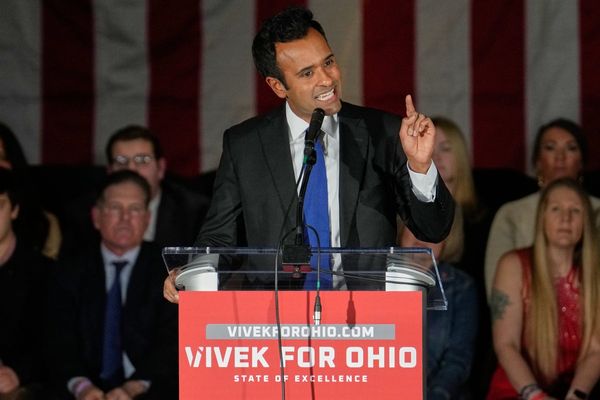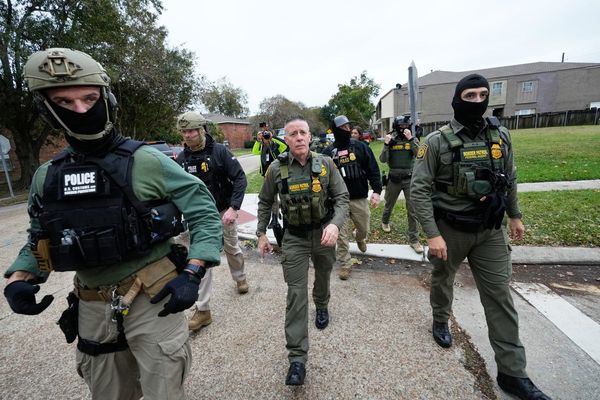
In 2016, Saudi Arabia embarked on a radical political and economic experiment. In April of that year, then Deputy Crown Prince Mohammed bin Salman announced the Vision 2030 economic reform initiative, which he delivered alongside a scathing critique of the country’s dependence on oil. To adapt to the challenges of the twenty-first century, the prince argued, Saudi Arabia would need to abandon its status as a rentier state dependent on oil export revenue. Instead, the kingdom would integrate its economy into global financial markets as both a destination and a source of investment. Riyadh’s sovereign wealth fund, he announced, would take over “more than ten percent of the investment capacity of the globe.”
Saudi Arabia has undergone tremendous social change in recent years, but it has struggled to make good on some of these more ambitious financial goals. Much of the promised foreign direct investment has yet to arrive, and the kingdom’s growth agenda has drained its foreign reserves. Most of Mohammed bin Salman’s more eye-catching promises, including futuristic urban megaprojects, remain unfinished. Still, Saudi Arabia’s recent experiment has begun the process of reorienting the economy. The country’s leadership has come to understand that the kingdom’s old model, based primarily on an oil-funded welfare state and rigid gender segregation, is no longer sustainable.
The concrete result of this realization—despite Mohammed bin Salman’s often dramatic role in Saudi policymaking—is an economic approach based not on glitzy futurism but on a far more orthodox and technocratic set of policies. Rather than publicity-grabbing modernization, Riyadh’s new model relies largely on bolstering domestic markets. The objective is to encourage debt-fueled consumption and reduce its citizens’ expectations of the state. Saudi leaders want to create an economy driven by the provision of services, U.S.-style consumerism, and a stripped-down state intent on reducing its spending, selling off assets, and weathering a decline in global oil demand. Despite the COVID-19 pandemic and two years of roller-coaster oil prices, the government has managed to stick to this increasingly disciplined fiscal policy that is preparing Saudi Arabia to face future economic challenges.
THE PERSISTENCE OF OIL
The contours of Riyadh’s new economic policies are sometimes difficult to identify. Saudi Arabia, for one, remains highly dependent on oil. Net oil and gas exports were 70 percent of the country’s total exports in 2020. Simultaneously, however, overall exports constituted just 26 percent of GDP—a sign of Saudi Arabia’s potential as the Gulf’s largest domestic consumer market. Oil and gas revenue is also shrinking as a percentage of the government’s overall budget, down from 64 percent in 2016 to just 53 percent in 2020.
The COVID-19 pandemic, moreover, spurred the government to identify novel ways of generating revenue and spending less. In response to the collapse of oil prices in the spring of 2020 and a long-term global transition away from fossil fuels, Saudi decision-makers realized that they needed to turn the economy in a new direction. As part of this effort, Riyadh increased a new value-added tax from five percent to 15 percent in the summer of 2020, boosting non-oil revenues by more than 30 percent over the first nine months of 2021. Taxes on goods and services now account for about 70 billion Saudi riyals, or around half the amount generated by oil income. Government spending on major infrastructure projects, by contrast, has contracted dramatically.
The Saudi private sector is also expanding, albeit from a weak base. After shrinking for seven consecutive quarters, the economy finally began to grow again in the second quarter of 2021, with GDP up by 1.5 percent. Private-sector growth outside the oil sector also rose, climbing 7.5 percent in the first half of 2021. The government’s attempts to shift social services such as health care and education into the private sector account for part of this expansion. Saudis now pay more out-of-pocket for health care than most of their peers in the Gulf states; according to 2018 data from the World Bank, the Saudi government covers about 60 percent of health-care spending, a relatively low proportion by Gulf standards.
Saudi leaders are creating an economy driven by services, U.S.-style consumerism, and a stripped-down state.
The government’s belt-tightening also extends to public-sector and military expenditures. Despite the pandemic, spending on public-sector wages declined from a high of nearly 510 billion riyals by the end of 2019 to about 490 billion riyals by the end of 2021. Military spending, for its part, has decreased from 540 billion riyals in 2019 to 440 billion riyals at the end of 2021. Recent high-level efforts to wind down the war in Yemen also have a fiscal rationale.
Separately, women are beginning to take on new roles in the labor market—improving access to economic mobility across the country. Twenty-five percent of Saudi women now work, compared with 15 percent in 2018. A similar trend exists among other demographics, with the labor force participation rate among 20- to 24-year-old men now at 55 percent, compared with 40 percent in 2018. And although unemployment among job seekers is still high—around 11 percent—more Saudis are looking for work now than they were before the Vision 2030 reforms. These numbers are partly the result of the government’s efforts to replace foreign workers with Saudi nationals, with certain jobs—such as those in retail—reserved for citizens only. Coupled with the pandemic, such workforce development programs have largely succeeded. Since early 2020, some 600,000 foreign workers have left the kingdom.
Finally, with the government’s urging, Saudis are now borrowing money to meet their lifestyle expectations rather than relying on the state to pay. One of Vision 2030’s objectives, after all, was to expand access to mortgages and develop a more accessible financial services sector by encouraging citizens to invest domestically and increasing the number of firms listed on the local stock exchange. Saudis have seized the opportunity. Saudi banks sold a record 46.7 billion riyals of new mortgages in the first quarter of 2021, up from 31.2 billion in the previous year. The U.S. credit rating agency S&P Global Ratings, moreover, expects the Saudi mortgage market to increase by 30 percent annually over the next two years.
The government’s next move might be the long-awaited privatization of the Saudi national electricity company, coupled with attempts to generate at least 30 percent of the country’s domestic energy supply from solar and renewable power. If such a transition occurs, Saudi Arabia will likely see a rise in the number of independent power producers and a more competitive market for different kinds of renewable energy. Although initially painful for Saudis accustomed to low energy prices, these developments will help the country meet its 2060 net-zero emission target. Recent government cuts to utility and fuel subsidies are already preparing citizens and residents for the shift.
A SLIMMER STATE
Taken together, these disparate policies represent a major shift in the Saudi political economy. By developing new sources of revenue and delinking spending from the ups and downs of oil pricing, Riyadh is laying the groundwork for a new style of fiscal conservatism in the Gulf.
Still, no transformation of this magnitude lacks opposition. In 2016, for instance, I argued that two central challenges might stall Vision 2030. First, the intransigence of the Saudi bureaucracy and the vested interests of the ruling family and its associated elites could halt reforms. Second, a Gulf real estate and property development model centered on housing and tourism would not work well in Saudi Arabia; Dubai and Riyadh are not the same. Between Mohammed bin Salman’s 2017 anticorruption purge and an ongoing campaign to suppress political dissent, however, the state has managed to quiet any internal opposition to its economic reforms. The second difficulty remains but has decreased in relevance. Saudi Arabia does not need to look the same as its smaller Gulf neighbors because it has the advantage of size and a growing domestic market.
Riyadh is laying the groundwork for a new style of fiscal conservatism in the Gulf.
Today, however, a different set of challenges exist. Much of the Saudi population is young, eager for social reforms, and content to borrow and hustle to meet their lifestyle expectations. Ten years from now, however, that cohort will begin to reckon with the economic burdens of middle age—including rising health-care costs, educational expenses for children, mortgages, and debts. And although an aging population is less likely to take to the streets, it is also less likely to innovate and take risks in new private businesses. There is only a narrow window of opportunity for Saudi Arabia to successfully transform its economy.
Despite these risks, the Saudi system has learned and adapted in remarkable ways over the last five years. Mohammed bin Salman has weathered his settling-in period and is now firmly in control of the state—to the extent that he now feels comfortable delegating some authority on economic and energy issues. In the face of enormous pressures to expand social spending, the state has maintained a disciplined and orthodox fiscal policy. This is a glimpse of the new Saudi economic model.







